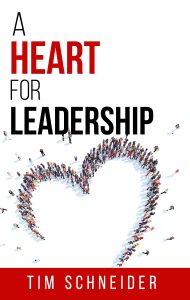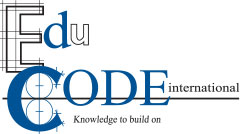By Camina Stevenson
For genuine football fans, this probably won’t seem like a new story. However, I would venture to guess, many haven’t heard the tale of a modern-day, football folk hero named Nicholas “Nick” Foles. Born and raised in Austin, Texas, Nick possessed a natural talent for the sport but definitely wasn’t always a starting quarterback. He didn’t know he would one day grow up to defeat Tom Brady and help dismantle the New England Patriot dynasty to make Super Bowl 52 history.
As a kid, Nick just loved the sport. He practiced relentlessly, dropping, fumbling and launching hundreds of football passes day and night before earning his way onto the high school varsity team. He didn’t win any high school football championships. Nick graduated from Westlake High in 2007 and continued playing in college but ended up having to redshirt twice, once for the 2008 freshman season and again during his 2010 junior season. Despite these setbacks, he was selected by The Philadelphia Eagles as the 88th pick in round three of the 2012 NFL draft.
After four seasons, the team that drafted Nick Foles to the NFL, no longer saw his worth. He was traded to the St. Louis Rams and played one season. Foles was unhappy with the trade. His performance on the field languished to the point where Nick thought he had surely lost love for the game. He considered retiring from the NFL and giving up the sport for good but changed his mind after going on a camping trip and having a heart-to-heart with family. He turned to his personal faith and decided it wasn’t time to quit.
In 2016, Nick signed on with the Kansas City, Chiefs as a backup quarterback. When the Chiefs declined a second-year option on his contract, he departed as a free agent and through an ironic twist of fate, ended up inking a two-year deal with the first team he ever played for in the NFL: The Philadelphia Eagles. This homecoming was bittersweet. Despite his return to the Eagles and playing once again with the team he loved and had never wanted to leave, Foles found himself mostly on the sidelines as a backup to Philadelphia’s all-star, franchise quarterback, Carson Wentz.
Then, it happened. Wentz suffered a season-ending injury during the NFC playoffs and Nick Foles – The Backup, The Unlikely Hero, The Lost Quarterback – stepped in and lifted the Philadelphia Eagles to unexpected heights of superstardom and glory.
Foles made Super Bowl history as the first quarterback to ever lead the Philadelphia Eagles to a Super Bowl title and can now be celebrated as the first player to ever throw and catch a touchdown in one Super Bowl game. While being honored as the reigning Champion and Super Bowl 52 MVP, Nick was asked to reflect on his career success and his response to the crowd was simple, humble and true:
“I think the big thing is don’t be afraid to fail. Failure is a part of life. It’s a part of building character and growing. Without failure, who would you be?”
Take a moment and envision one major career accomplishment you have achieved in your life. You may not have won any Super Bowl championships, but think big. Choose an undeniably bright highlight from your own personal success story. Now how did you get there?
Whenever you imagine the string of events leading you to any defined moment of success, you will probably recognize the familiar faces of people who went out of their way to help you along the journey. But do you also glance back like Nick Foles and see the questionable decisions you made, the setbacks, the disappointments, the wrong turns and missteps, the embarrassing, humiliating falls? Do you recognize the countless number of clumsy, awkward attempts it may have taken while learning to master new sets of skills? How many times were you turned away or rejected? How many times did you fail before you could ultimately succeed? These failures, every single one of them, taught you one invaluable lesson after another to help you become the person and leader you are today.
As someone taking on a leadership role in your organization, you may already have an awareness and understanding that spectacular failure is the only true path to success. So, have you given your team members enough opportunities to fail gracefully and spectacularly on their own?
Without creating opportunities for your team members to make mistakes, where will your team be around this time next year? They will stagnate. They will lose interest or burn out. Your team members share a fundamental emotional need to work in a supportive, empathic environment where they are free to make (guided) mistakes in order to learn, expand, innovate and grow.
CREATING OPPORTUNITIES FOR TEAM MEMBERS TO FAIL GRACEFULLY & SUCCEED
• Encourage others to step beyond their comfort zone. This means, delegate! Know they will fail sometimes but that’s part of the progress. Coach them through the mistakes.
• Don’t be afraid to let your team members know that failure is the only path to success. We must try many times to succeed. Pushing forward and learning to be resilient will be an important lesson.
• Remind team members that we learn about ourselves when we fail. We learn how to work together or form new strategies. We learn what works and what doesn’t. We learn humility. Most failures are simply successes in training.
• Teach team members to embrace failures rather than bolt from their inevitability. Show team members that the work environment encourages an atmosphere of rolling with the punches thus making future mistakes less painful and more of a learning experience.
• Celebrate failures as a team! Yes, seriously. Invite humor, fun and laughter whenever possible. If projects take turns for the worse, encourage team members to regroup and build upon the camaraderie and lessons learned for better outcomes down the road.
• Help your team understand that failure is a part of life and not something to be avoided. Remind yourself and your team that failure is our greatest mentor. Failure builds character and the more we fail, the more we can succeed!








